
AI: The Frontier of MarTech
The Position of Artificial Intelligence (AI) Use in Marketing
Artificial intelligence (AI) is having a major impact on the MarTech industry. AI is already being used in a variety of ways to improve marketing campaigns, including personalizing content and messaging, predicting customer behavior, and automating tasks. As AI continues to develop, it is likely to become even more integrated into MarTech. In the future, we can expect to see AI being used to create personalized customer experiences, make better decisions, and solve complex problems.
When reading, the above paragraph appears to be a standard blog intro. Would you believe that this copy is completely AI generated? This is indicative of the current landscape of MarTech and where the use of AI is headed.
Artificial Intelligence (AI) has recently become a buzzword. Its use for marketing purposes has become increasingly ubiquitous, while its practical applications and potential advancements in this field remain somewhat ambiguous. Read on to unveil some of the nuances of AI in marketing, potential practical applications, and the state of AI in marketing today.

Artificial Intelligence (AI) Marketing
The process of leveraging AI methods and tools such as data models, algorithms, and machine learning to achieve marketing goals.
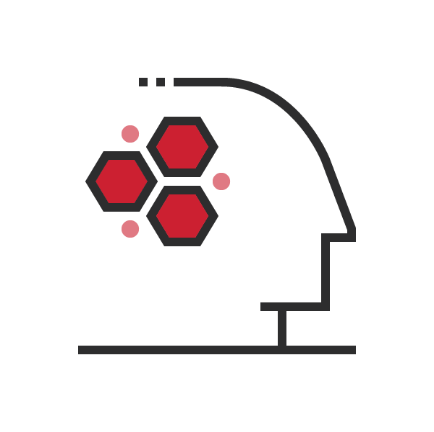
Artificial Intelligence (AI) Marketing
The process of leveraging AI methods and tools such as data models, algorithms, and machine learning to achieve marketing goals.
Key Uses of AI for Marketing
Artificial Intelligence (AI) Marketing
One of AI’s most relevant contributions to the marketing space is its ability to generate original content. This includes copy, music, images, and more.
This process typically works by asking the marketer to input keywords and adjust settings, prompting the tool to generate materials. The first paragraph of this article was created through this process. While tools vary in intelligence, many utilize machine learning to sharpen brand alignment.

While convenient, generative AI produces generic content. Virtually anyone can access it, meaning that content “ownership” and originality are jeopardized.
AI generated visuals are also potentially not free or clear for use. As the legalities of using AI generated content are being ironed out, there are companies that are working on ways to ensure legal usage.
There is an argument to be had for both the use of AI to inspire and inform, as well as the artistry of human design for marketing materials. One approach is to adopt AI strategy that capitalizes on the tool while also ensuring that human insight and input is involved in content development.
Customer Profiles
AI can produce sophisticated audience segmentation and targeting. AI tools use data inputs to create complex algorithms to pinpoint customers and sort them into segments. Automating this process can allow brand teams to cast a wider net and develop more robust customer profiles.
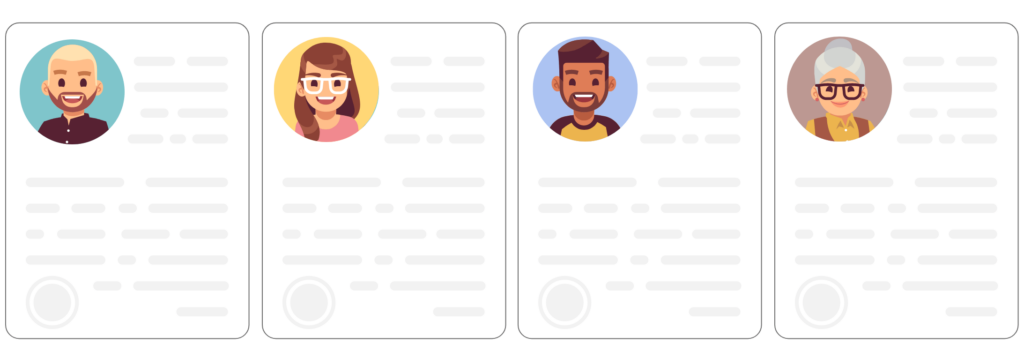
AI may be a great option for brands that already have massive amounts of data available. Where it can be less useful is when there isn’t data- the results could be generic at best, wrong, or worse, potentially offensive.
Starbucks, for example, uses AI technology to take large amounts of data and apply algorithms to build customer profiles and generate targeted offerings. These profiles create advantages for customers and opportunities for Starbucks to explore new markets. While they make great use of AI as a tool, it is important to note that it is the resources and data available to them that make this possible.
A best practice while using AI for this purpose is for the brands to have a strong understanding of their values, data access, and position to supplement the tool.
Personalization / CX
The combination of generative AI and AI-powered customer profiles can assist brands in creating a more personalized customer experience. This includes promotional channel identification, catered messaging, and more comprehensive engagement with key audiences.
If the brand has access to a large portfolio of data, AI can be used to identify patterns and adjust personalized ads based on those patterns. This approach is real-time automated as opposed to manual.
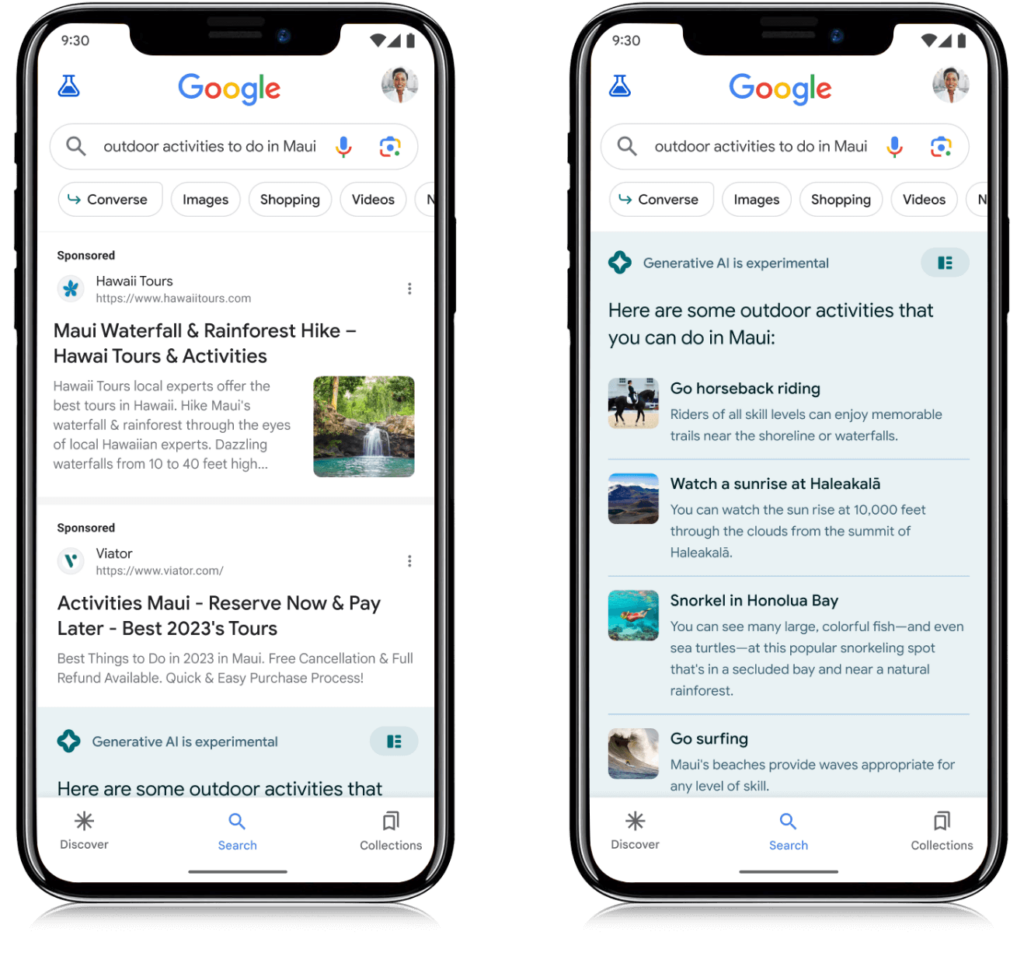
This Google Search Ad dynamic combines content based on performance with a targeted demographic. When the user types in queries, ads are generated based on their search and data collected about them as well as the other members of their segment.
Chatbots
A chatbot is a technology that simulates interactions between consumers and customer service. It accelerates this process by attending to customers without time constraints and more efficiently tapping into consumer information.
Chatbots today are often not AI, but pre-written decision trees. AI can be very tricky to use for direct customer interaction because of sensitive subject matter (e.g., healthcare and mental health) and recommendations that could potentially result in lawsuits.
While these tools can be productive for marketers, customers also recognize authenticity. In fact, according to a survey, 58% of consumers have expressed that they would want a brand’s use of AI explicitly disclosed.
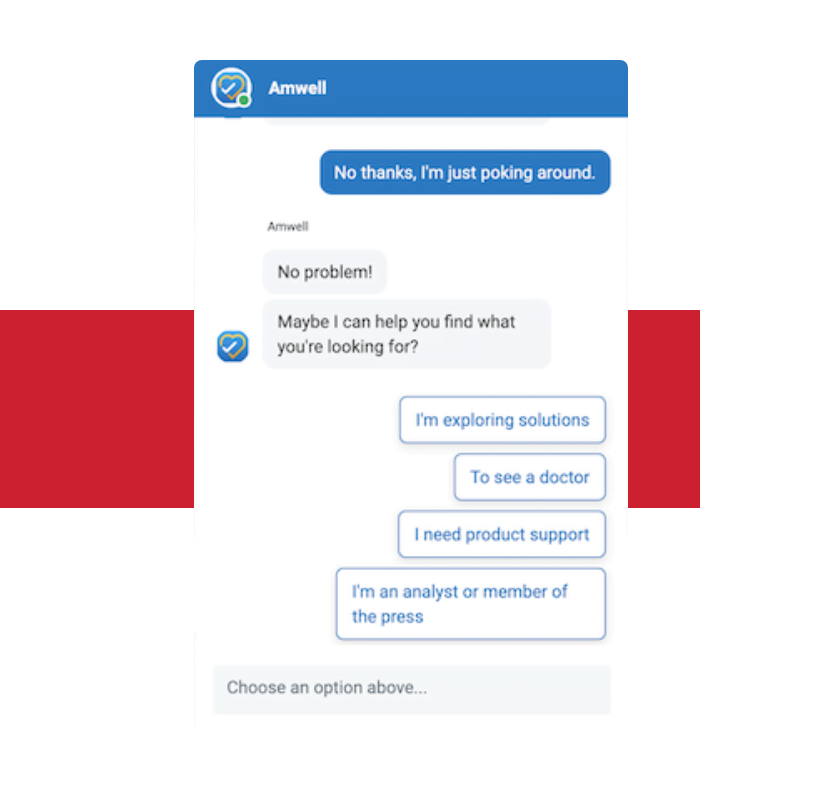
This Google Search Ad dynamic combines content based on performance with a targeted demographic. When the user types in queries, ads are generated based on their search and data collected about them as well as the other members of their segment.
Marketers’ Perspective
AI has been widely adopted within the marketing industry. Specifically, 61% of marketers utilize AI in their marketing activities and 19.2% of marketers have used 40%+ of their marketing budget on AI-driven campaigns.
Organizational use of AI tools is dependent on many considerations including cost, ease of use, project scale, etc. Further, the complexity of data and platforms to create models is vital for implementation. A marketing team’s ability and resources to adequately implement AI in marketing activities are reflected in how this tool is adopted.
Many marketers are currently struggling with how to best utilize AI-driven marketing and adapt to the acceleration of AI capabilities. They may feel pressure to optimize processes with AI to stay competitive, while also maintaining a “human touch” for consumer perceptions.
Identifying or hiring AI specialists may be an effective solution. Creating unique and effective AI prompts and training is important for the proper use of AI capabilities. Consider looking at tools that can protect proprietary information from escaping into the wild with consumption by public AI generators.
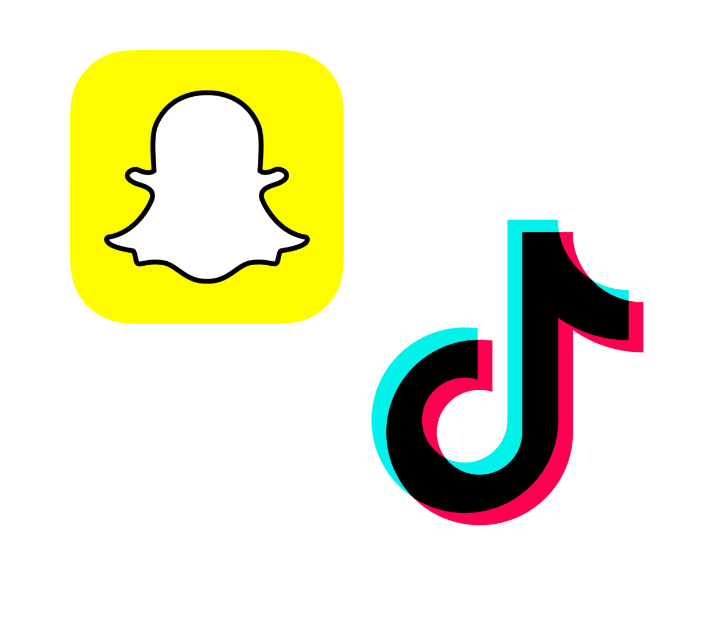 Looking Ahead
Looking Ahead
AI is finding its way into the marketing plans of companies everywhere, from simple efforts like blog title generation to complex personalization outreach efforts. Since 2022, AI adoption for marketing has grown by almost 250%. Indicative of this stat, AI has become table stakes for marketers. Embrace it and enjoy the ride! It may be bumpy but it’s going to be worth it. (Unless the robots take over and subjugate us all first!)
Advancements in AI tools will accelerate their use by making them more accessible and potentially costly. Further, as platforms like Tik Tok and Snapchat continue to roll out consumer applications for AI, perspectives are evolving, and the concept of AI is becoming much more digestible.